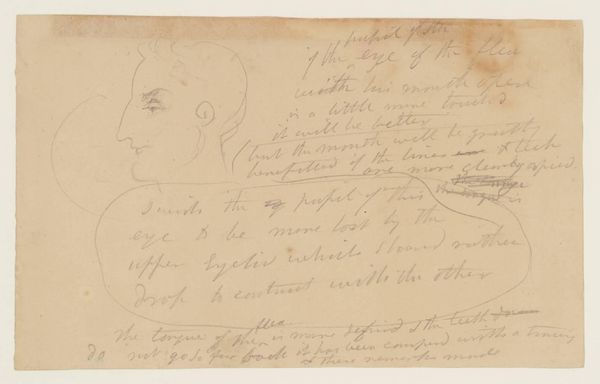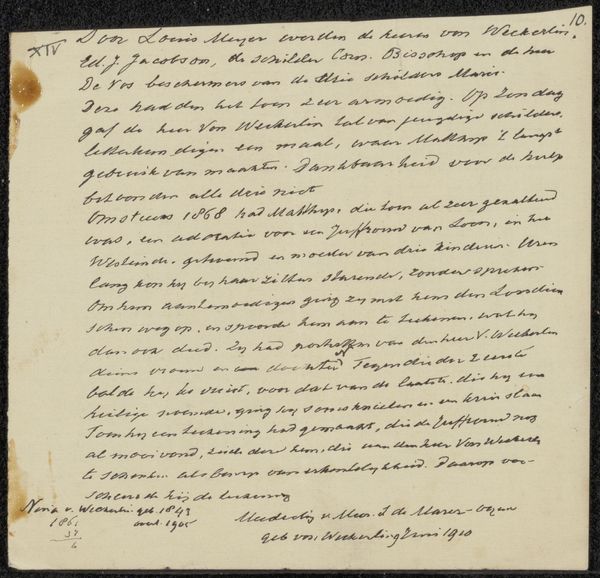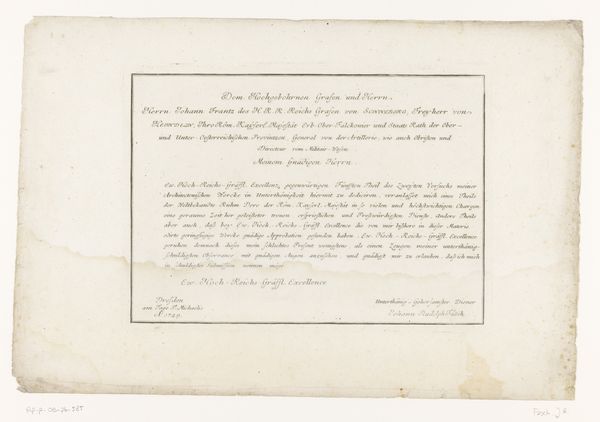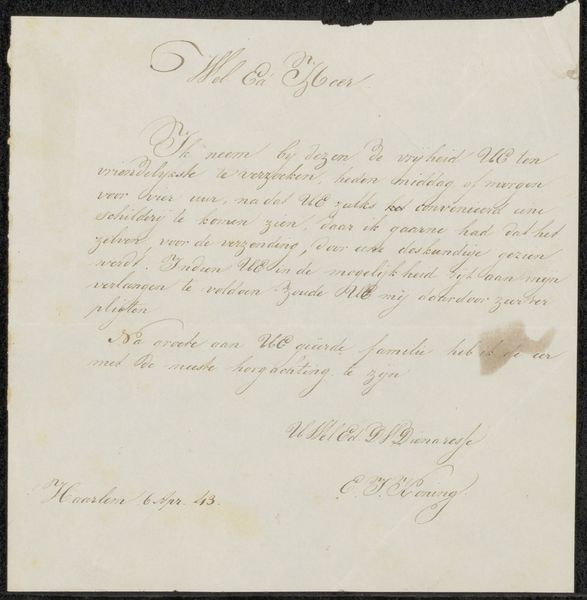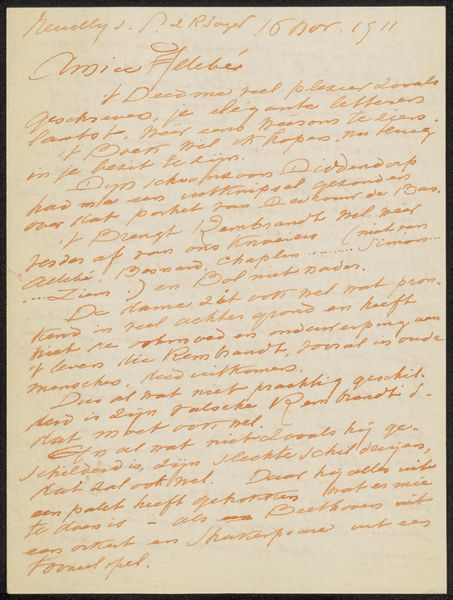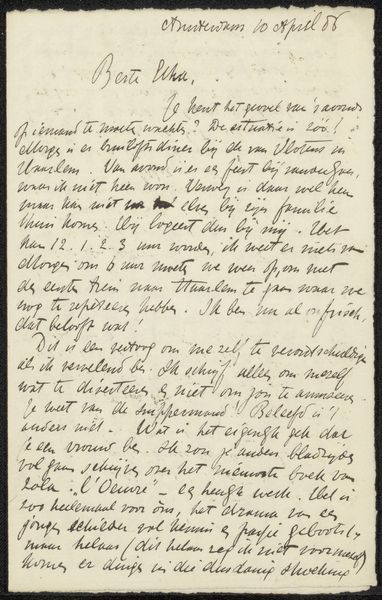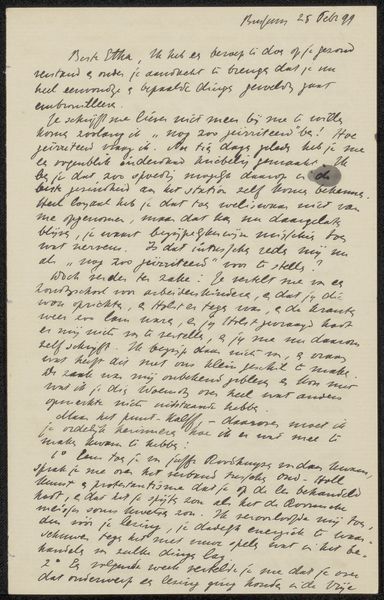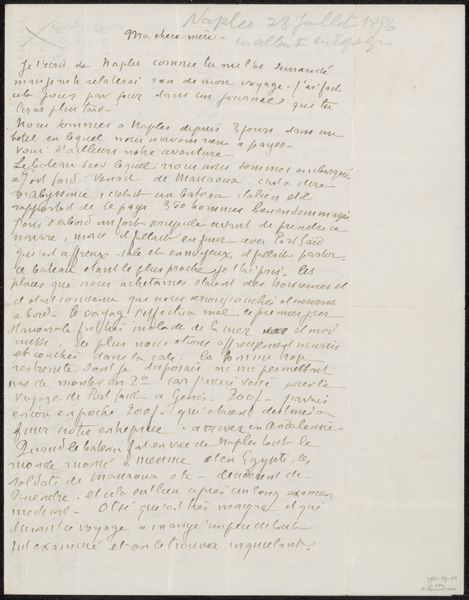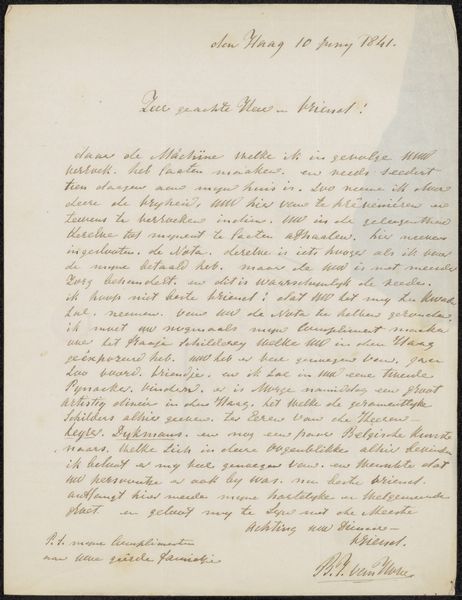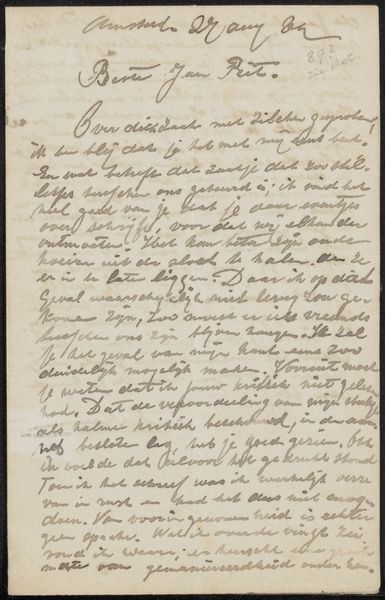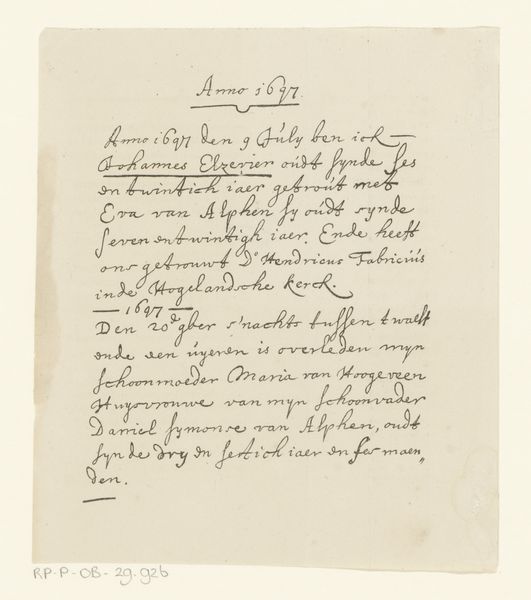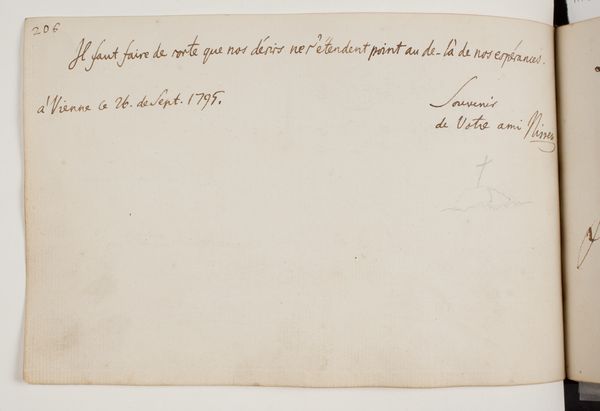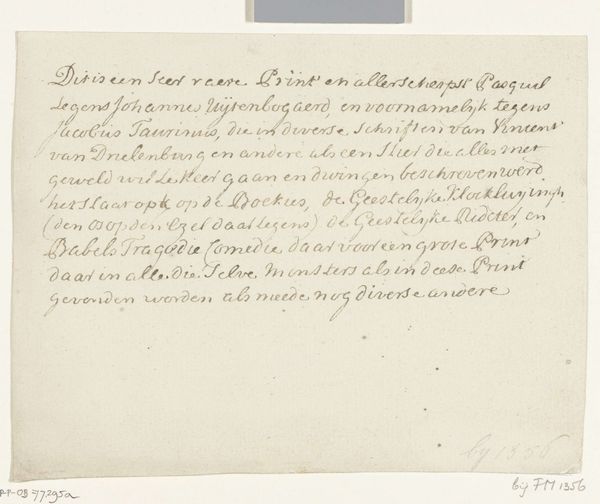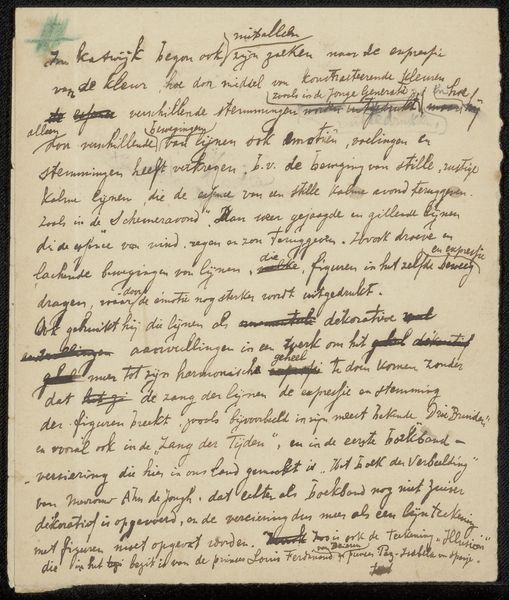
drawing, paper, ink
#
portrait
#
drawing
#
paper
#
ink
Dimensions: height 138 mm, width 170 mm
Copyright: Rijks Museum: Open Domain
Curator: Ah, here we have an ink drawing on paper, "Silhouette Portrait of Anthony Hoynck van Papendrecht," created sometime between 1782 and 1799. It presents a rather classic silhouette portrait. Editor: My first thought is, that silhouette just exudes authority, doesn't it? So precise, like a sharply defined shadow of power, and almost brutally efficient. There's no room for messing about, or soft, fuzzy lines! Curator: Absolutely, silhouette portraits gained immense popularity during that period. They offered an affordable and relatively quick alternative to painted portraits, becoming almost a democratic art form. Think about the social dynamics – people wanted to represent themselves but also needed alternatives that suited emergent social classes. Editor: That’s interesting, I tend to only view them as quite stern now! The neat way the hair is tied back—the whole image is contained and composed and…dare I say it? Somewhat reserved! And those handwritten dedications surrounding it only heighten this reserved sentimentality. Curator: Precisely! Silhouette portraits provided a fascinating way for people to visualize themselves within society and solidify identities during times of massive change. These profiles were part of a broader cultural fascination with physiognomy, or the belief that you could judge character from outward appearances. In this context, this man, whose image is enshrined in memory, wanted to immortalise this idea in a symbolic gesture to honour his relationship and public virtue through the art of a silhouette. Editor: Right, that public persona crafted with a few simple lines... It’s clever, actually. Suggesting far more than it actually shows. Makes you think about the personas we create for ourselves today, too, huh? Only these are slightly more pixelated than black paper. Curator: A fascinating connection to consider when evaluating portraiture of any kind in modern society, yes! I always find it incredibly striking how artworks such as these continue to resonate and influence our approaches to portraiture even centuries after they were made. Editor: Well, from my point of view, I must admit I appreciate seeing just how the past saw itself and its relationships, especially those moments when art captures people as pure, concentrated ideas—rather austere, perhaps, but intriguing all the same!
Comments
No comments
Be the first to comment and join the conversation on the ultimate creative platform.
